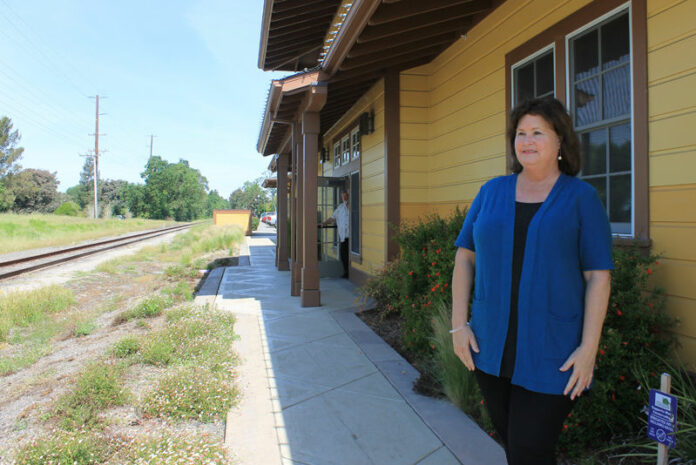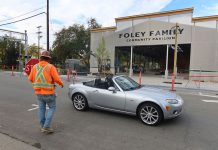
State comes through with gap funding, now it’s up to the voters
In a statement on April 26, the Sonoma-Marin Area Rail Transit (SMART) District received $21.5 million in state transportation funds to construct the extension to Windsor. However, this grant alone is not enough to complete the corridor from the station on Airport Boulevard to the Windsor train station. It will require the passage of the proposed $40 million in funding from Regional Measure 3 (RM3), which will allow SMART to complete the first of three northern Sonoma County extensions.
According to the statement, RM3, which goes before voters on June 5, would increase tolls on seven state-owned bridges over a period of several years. It would generate an estimated $4.5 billion in funding over a 25-year period for public transportation, highway improvements and bicycle and pedestrian pathways. Funding for SMART’s Windsor extension is part of that funding plan and will allow SMART to move forward with the Windsor extension.
“This is a big day for SMART and for the Town of Windsor,” said SMART board chairwoman and Windsor town council member Debora Fudge, in the statement. “We want to thank the California Secretary of Transportation and his staff, and our state legislators for funding this important connection for our north county residents. It is now essential that we all vote to approve Regional Measure 3 in the June election, which will fully fund the extension from the Sonoma County Airport station to the heart of Windsor.”
“It was funding we had worked on for a long time,” said Fudge in an interview at the Windsor train station. “But, the day we got it was a total surprise. Our general manager had been going to Sacramento, probably every other week wrangling to get the money that would help get us to Windsor. He and I had talked at 9 a.m. that morning and I said ‘where’s the money?’ and he said ‘we don’t have it.’ Then he called at 10 and said we got it.”
“That’s the funding we needed that will add to the funding that we will get from (RM 3) which we need to get to Windsor. If RM 3 passes and we have this state money we have a little more than we need to get to Windsor. We will know on Election Day whether we can open the Windsor train station in 2021,” Fudge concluded, adding that it will take that long to finish the Santa Rosa to Windsor section because of the engineers’ current focus on the final Larkspur connection. “We need them to finish the work they are doing there before we bring them up here so it works timing wise really well.”
“This is an important step that moves us closer to completing our 70-mile vision, which includes expanding our SMART train service to Windsor, Healdsburg and Cloverdale,” said SMART board member Carol Russell in the statement. “This is a major milestone for all of our North Bay residents who have been waiting for a transportation option to northern Sonoma County.”
Windsor has been waiting for this train since the downtown began in 1997, according to Fudge, and she thinks all aspects of the community will benefit.
“The Windsor businesses and residents are so excited for the train to arrive. The businesses have been looking at the uptick that Railroad Square businesses have been experiencing (in Santa Rosa) and they are anxious to see that here. I think it will improve our downtown. I’d love to see some tourists from the bay area come up on the weekend and experience what we have here. We built this train station in 2007 with federal state and local money; there was no money from SMART.”
“We’ve always been optimistic. Who else builds a train station before you’ve voted on a measure to have the train? Cloverdale and Windsor,” she finished with a laugh.
According to Fudge, since its August launch, SMART has carried 475,000 passengers, 35,000 bicycles and 2,000 wheelchairs. SMART’s passenger train service currently serves a 43-mile corridor with stations in Santa Rosa, Rohnert Park, Cotati, Petaluma, Novato and San Rafael. Construction on the Larkspur extension is underway and is expected to be completed by the end of 2019.
“We’ve concentrated on the last 20 years on building a downtown and redoing our streets so we can become a less car-centric town; so people can get around without having to drive,” Fudge said. “I think having a commuter train here will certainly help with that. It gives people more options and it will enhance their quality of life by not being stressed out in traffic. I hope it will get people out more bicycling and walking, because we’ve got the perfect town for that.”








